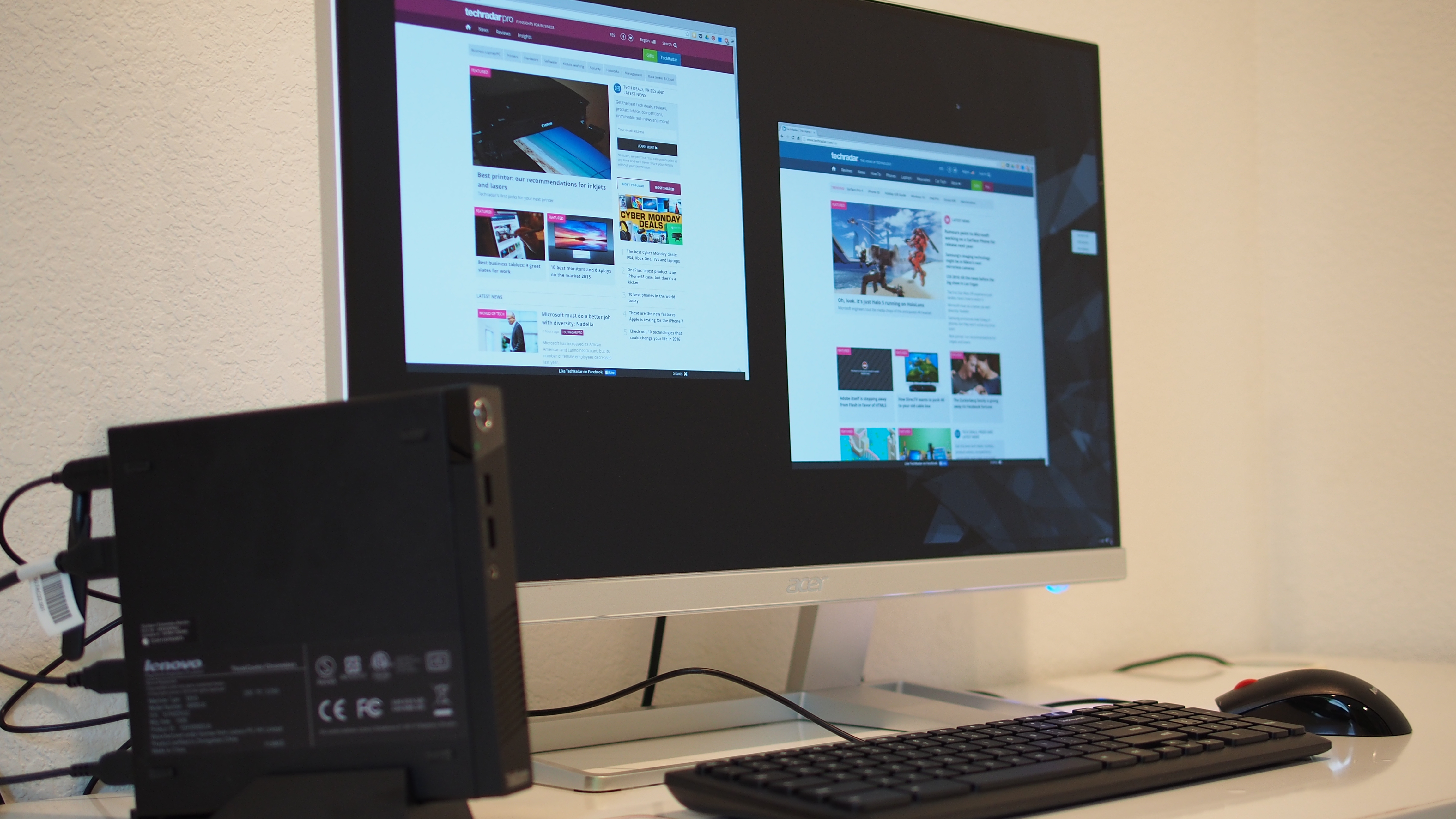TechRadar Verdict
Lenovo brings Chrome OS to desktops in a compact form factor. The Chromebox Tiny joins Lenovo's Tiny-in-One ecosystem, allowing users to create a modular all-in-one desktop. The micro PC form factor of the Chromebox Tiny means you can position the Chrome PC on your desk, or you can snap it onto the rear of the optional ThinkVision monitor to create your own Chrome AIO PC with Lenovo's signature business-friendly design.
Pros
- +
Fast performance
- +
Modular setup
- +
Ships with keyboard and mouse
Cons
- -
No memory card reader
- -
Limited storage
- -
No internal expansion
Why you can trust TechRadar
With the release of its first Chromebox ($199, £132, AU$271) in the micro desktop form factor, Lenovo is giving business and education users the option of creating a modular, all-in-one (AIO) Chrome OS PC.
The device sports the same compact, flattened desktop form factor as Lenovo's Windows-based ThinkCentre M Series Tiny ($299, £198, AU$407), making it easy for offices to swap out older Tiny-in-One units for the new Chromebox Tiny. Lenovo also sells a separate 23-inch ThinkVision Tiny-in-One monitor ($279, £185, AU$380), which comes with a 1080p twisted nematic panel with a fast 5 millisecond (ms) refresh rate, with a slot on the rear that the Chromebox Tiny slips into. In this configuration, you would have effectively created your own modular, all-in-one desktop.
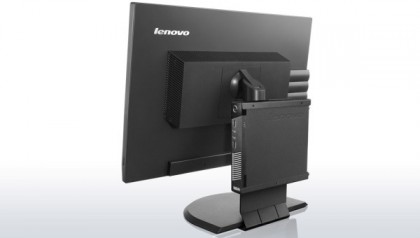
As a small form factor PC, the Chromebox Tiny competes not only against its Windows-powered ThinkCentre M73, but also against other Chromeboxes and Chrome AIO setups. The Chromebox Tiny will closely compete with the Asus Chromebox M075U ($246, £163, AU$335), HP Chromebox ($246, £163, $335) and Dell Chromebox ($329, £218, AU$448).
Design
The ThinkCentre is a compact desktop that's even more compact than Apple's iconic miniature desktop, the Mac Mini. Encased in an angular, black aluminum enclosure with a plastic front panel, the Chromebox measures 7 x 1.4 x 7.2 inches (17.78 x 3.56 x 18.29cm) and weighs just 2.2 pounds (0.99kg), giving it the same thickness as the Mac Mini, but 0.7 inches (1.78cm) more narrow and 0.5 inches (1.27cm) shorter. The Chromebox Tiny also weighs 0.5 pounds (0.23kg) less than Apple's unit.
The Dell, Asus and HP Chromebox are even more compact, and all three share similar dimensions. The Dell Chromebox measures 4.8 x 4.8 x 1.6 inches (12.19 x 12.19 x 4.06cm), making it the most compact Chromebox. HP's Chromebox is slightly bigger at 4.8 x 4.9 x 1.5 inches (12.19 x 12.45 x 3.81cm), while the Asus measures 4.88 x 1.65 x 4.88 inches (12.4 x 4.2 x 12.4cm). Because of their plastic constructions, these three units are lighter than the metal-clad Lenovo Chromebox Tiny, coming in between 1.1 (0.50kg) and 1.4 pounds (0.64kg).
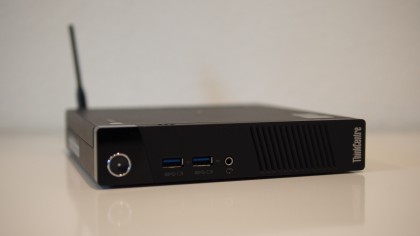
The unit comes with rubber feet on the bottom for horizontal use, but you could also position the Chromebox Tiny upright in a plastic stand on your desk or even mount the desktop to the rear of Lenovo's ThinkVision monitor to save space.
Lenovo maintains its signature rectangular, box-like design that's found on the company's enterprise-focused ThinkPad notebooks on the Chromebox Tiny. This likely won't deter businesses from purchasing the Chromebox Tiny, especially when it's mounted to the ThinkVision monitor to create a modular Chrome OS AIO PC, but students and home users may find HP's subtle curves and color options of white or ocean turquoise more playful.
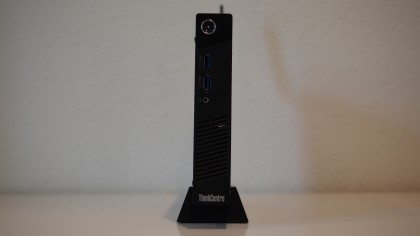
Ports are also abundant on the Chromebox Tiny. You'll find two USB 3.0 ports, a combination headphone/mic jack and a large power button on the front. In the rear, there is a swiveling Wi-Fi antenna, which kind of mars the clean lines of the Chromebox Tiny.
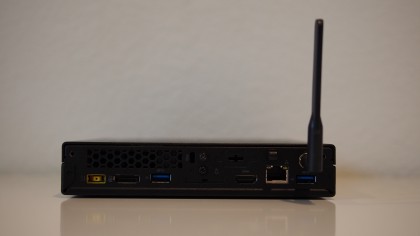
You'll also find two additional USB 3.0 ports, HDMI connector, DisplayPort and a wired Ethernet jack. Lenovo's flat-tip laptop-style power connector is also found on the rear.
